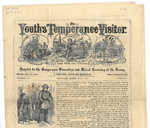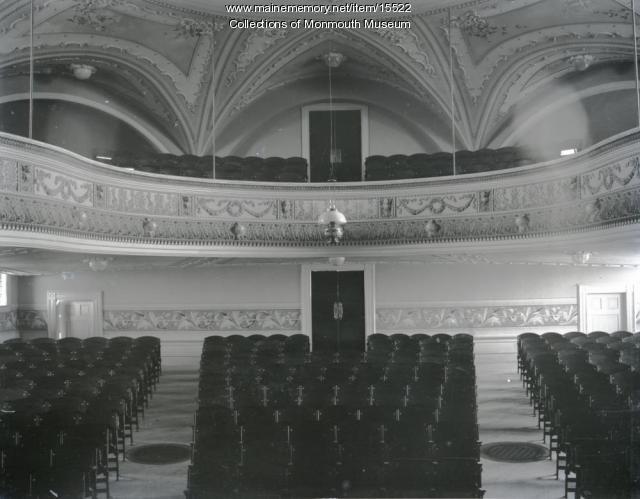Keywords: Early homes
- Historical Items (457)
- Tax Records (2)
- Architecture & Landscape (2)
- Online Exhibits (168)
- Site Pages (282)
- My Maine Stories (30)
- Lesson Plans (2)
Online Exhibits
Your results include these online exhibits. You also can view all of the site's exhibits, view a timeline of selected events in Maine History, and learn how to create your own exhibit. See featured exhibits or create your own exhibit
Exhibit
Student Exhibit: The Story of the Heywood Tavern
The story of the Heywood Tavern in Skowhegan.
Exhibit
Northern Threads: Penobscot mocassins
A themed exhibit vignette within "Northern Threads, Part I," about telling stories through Indigenous clothing, featuring an essay by Jennifer Sapiel Neptune (Penobscot.)
Exhibit
In Time and Eternity: Shakers in the Industrial Age
"In Time and Eternity: Maine Shakers in the Industrial Age 1872-1918" is a series of images that depict in detail the Shakers in Maine during a little explored time period of expansion and change.
Exhibit
Navy Firefighting School, Little Chebeague Island
Little Chebeague Island in Casco Bay was home to recreational facilities and a firefighting school for WWII sailors. The school was part of a Navy effort to have non-firefighting personnel knowledgeable in dealing with shipboard fires.
Exhibit
Maine's Untold Vegetarian History
Vegetarianism has deep roots in Maine and this first-of-its-kind exhibition explores this untold story.
Exhibit
Dressing Up, Standing Out, Fitting In
Adorning oneself to look one's "best" has varied over time, gender, economic class, and by event. Adornments suggest one's sense of identity and one's intent to stand out or fit in.
Exhibit
From French Canadians to Franco-Americans
French Canadians who emigrated to the Lewiston-Auburn area faced discrimination as children and adults -- such as living in "Little Canada" tenements and being ridiculed for speaking French -- but also adapted to their new lives and sustained many cultural traditions.
Exhibit
Evergreens and a Jolly Old Elf
Santa Claus and evergreens have been common December additions to homes, schools, businesses, and other public places to America since the mid nineteenth century. They are two symbols of the Christian holiday of Christmas whose origins are unrelated to the religious meaning of the day.
Exhibit
Maine's ample woods historically provided numerous game animals and birds for hunters seeking food, fur, or hides. The promotion of hunting as tourism and concerns about conservation toward the end of the nineteenth century changed the nature of hunting in Maine.
Exhibit
Northern Threads: Two centuries of dress at Maine Historical
Organized by themed vignettes, Northern Threads shares stories about Maine people, while exploring how the clothing they wore reveals social, economic, and environmental histories. This re-examination of Maine Historical Society's permanent collection is an opportunity to consider the relevance of historic clothing in museums, the ebb and flow of fashion styles, and the complexities of diverse representation spanning 200 years of collecting.
Exhibit
Rum, Riot, and Reform - Drinking Implements
"When the family returned home after almost a year, their home was intact and the jug of beer untouched."
Exhibit
Black soldiers served in Maine during World War II, assigned in small numbers throughout the state to guard Grand Trunk rail lines from a possible German attack. The soldiers, who lived in railroad cars near their posts often interacted with local residents.
Exhibit
Throughout New England, barns attached to houses are fairly common. Why were the buildings connected? What did farmers or families gain by doing this? The phenomenon was captured in the words of a children's song, "Big house, little house, back house, barn," (Thomas C. Hubka <em>Big House, Little House, Back House, Barn, the Connected Farm Buildings of New England,</em> University Press of New England, 1984.)
Exhibit
Rum, Riot, and Reform - Temperance Membership
"… depicted as brave young heroines fighting for home and family. The Woman's Christian Temperance Union was founded in Cleveland in December of 1874…"
Exhibit
Rum, Riot, and Reform - Women Leaders and Temperance
"Stevens, 1913. Home of Mrs. Lillian M.W. Stevens, Portland, ca. 1910Greater Portland Landmarks Home of Lillian M. N. Stevens Postcard, ca."
Exhibit
Like other immigrant groups, Jews came to Maine to make a living and enjoy the natural and cultural environment. Their experiences have been shaped by their occupational choices, Jewish values and, until recently, experiences of anti-Semitism.
Exhibit
Maine's first governor, William King, was arguably the most influential figure in Maine's achieving statehood in 1820. Although he served just one year as the Governor of Maine, he was instrumental in establishing the new state's constitution and setting up its governmental infrastructure.
Exhibit
A Snapshot of Portland, 1924: The Taxman Cometh
In 1924, with Portland was on the verge of profound changes, the Tax Assessors Office undertook a project to document every building in the city -- with photographs and detailed information that provide a unique view into Portland's architecture, neighborhoods, industries, and businesses.
Exhibit
Lincoln County through the Eastern Eye
The Penobscot Marine Museum’s photography collections include nearly 50,000 glass plate negatives of images for "real photo" postcards produced by the Eastern Illustrating and Publishing Company of Belfast. This exhibit features postcards from Lincoln County.
Exhibit
"… for listening to music without leaving the home. Use the navigation tool on the left to explore the exhibition."
Exhibit
Music in Maine - Longfellow Family Music
"… Longfellow Pierce moved back to her childhood home in 1835 after the death of her husband, George Pierce."
Exhibit
Student Exhibit: Bloomfield Academy
In 1842, the new Bloomfield Academy was constructed in Skowhegan. The new brick building replaced the very first Bloomfield Academy, a small wooden building that had been built in 1814 and served as the high school until 1871. After that, it housed elementary school classes until 1980.
Exhibit
Cultures from the ancient Greeks and Chinese to contemporary societies have set aside time to give thanks, especially for the harvest. In 1941, the United States set a permanent date for the observance.
Exhibit
Music in Maine - Opera, Orchestras and Stages
"… lot to improve our tribe through her notoriety at home and nationwide. Aunt Lu brought more than one bridge to the Penobscot people, creating…"
























